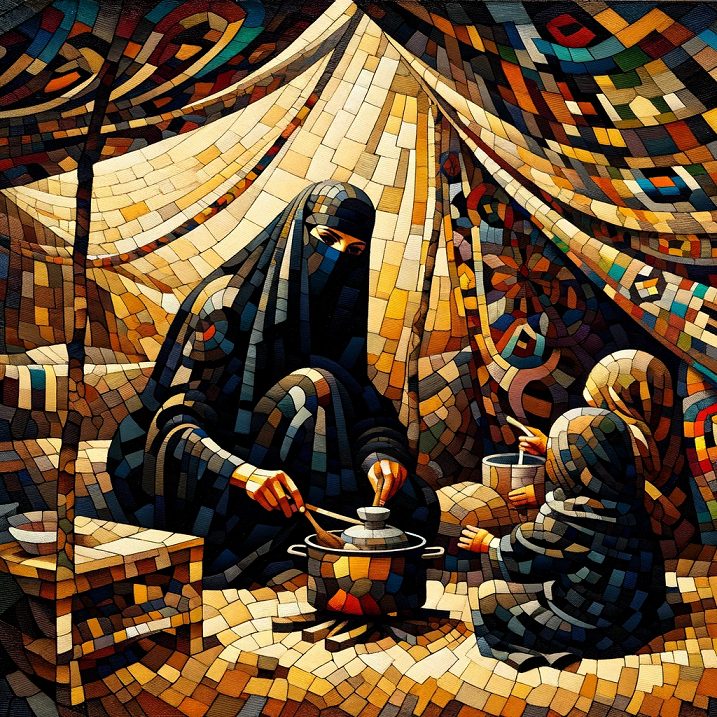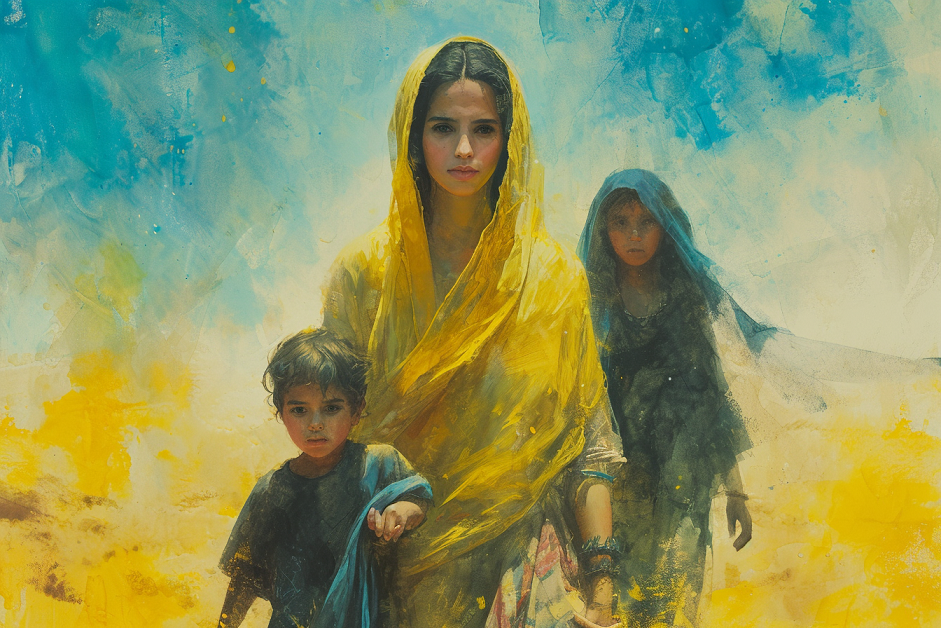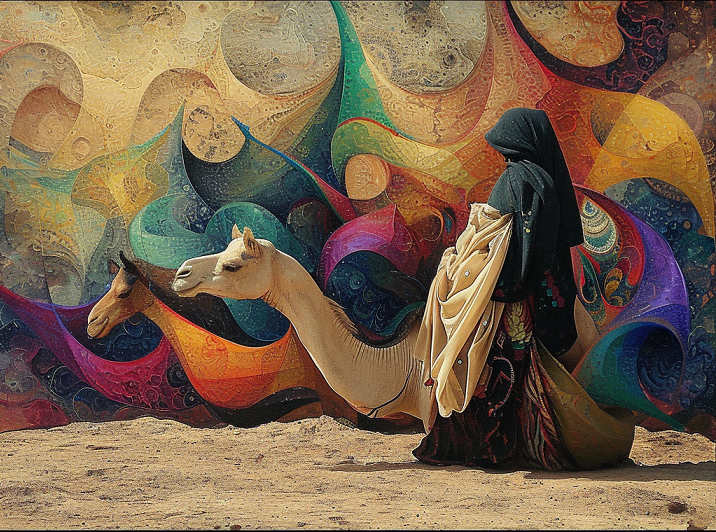In the early 20th century, H.R.P. Dickson, in his ethnographic account “The Arab Of The Desert,” sheds light on the unique and often misunderstood role of women within Bedouin Arab society, particularly in and around Kuwait. The author’s observations reveal a distinct contrast between the lives of these women and their urban Arab counterparts. While the desert women faced hardships and privations, their position was characterised by a remarkable degree of freedom and happiness.
Key Takeaways:
- Bedouin women in the desert enjoyed relatively freer and happier lives compared to their urban counterparts.
- Divorces among Bedouin women were often due to incompatibility or minor issues, leading to little long-term consequences.
- The management of the tent and the honoring of guests were central responsibilities for Bedouin women, showcasing their crucial roles.
- Women in the desert were shielded from strangers, yet they remained knowledgeable about events through discreet partitions.
- Bedouin women’s safety during wartime was paramount, and they were considered inviolable even in cases of raids.
- The customs protecting women’s safety during war evolved over centuries, emphasizing the honor and sanctity of women.
One noteworthy aspect of women’s lives in this society was the frequency of divorces. In many cases, these divorces were not taken too seriously, often arising due to incompatibility of temperament or seemingly trivial reasons. Such occurrences, although disruptive, were not viewed as grave matters within the Bedouin context. Instead, they reflected the flexibility in marital relationships.
Crucially, a woman’s prospects in the marriage market were influenced by her physical attractiveness and her family’s reputation. If a woman possessed both beauty and came from a respected lineage, she had the advantage of easily finding a dozen other men ready to marry her. This cultural dynamic highlighted the significance placed on a woman’s physical appearance and her family’s social standing.
Marriage and Children
One distinctive feature of this society was that divorced women retained custody of their small children until they reached the age of eight. This custody arrangement allowed mothers to maintain a close and nurturing relationship with their young offspring during their formative years. The bond forged during this time held a significant place in the family structure.
As children grew older and approached the age of eight, a pivotal transition occurred. At this point, mothers handed over the responsibility of their children to their father’s care. While this might seem like a significant separation, it’s important to note that these children were never far from their mothers. They were allowed to come and visit their mothers as often as they liked, ensuring continued contact and connection.
Furthermore, Dickson notes that if a woman possessed the intelligence and diplomacy to do so, she could maintain amicable relations with her former husband. It was not uncommon for a divorced woman to call on her former husband and visit his new wife regularly. This practice illustrated the complex web of relationships and interactions that characterised Bedouin Arab society.
Household Management
Within the confines of the tent, women held the esteemed titles of “um al ‘ayil” (mother of the family) as well as “raiyat al bait.” These titles signified their pivotal positions as caretakers of the household’s honour and well-being. The reputation of their husbands rested firmly in their hands, and they shouldered the crucial responsibility of upholding it.

Among their numerous duties, providing for guests ranked high on the list. When visitors arrived, it was the woman’s duty to ensure their comfort and satisfaction. This included preparing choice and delectable dishes, brewing good leben (a type of fermented milk), and generally promoting the good name of her husband among fellow Arabs. The ability to host and entertain guests with hospitality and delicious food was a significant aspect of a woman’s role in the community.
Interestingly, the mistress of the house, although she remained hidden from stranger guests, possessed a profound awareness of all that transpired within her domain. A mere curtain partition separated the women’s quarters from those of the guests in the Bedouin tent, allowing her to stay informed and involved while maintaining the cultural separation of men and women.
Intriguingly, one of the distinctive customs of this society was the avoidance of mentioning the personal name of the lady of the house in the presence of guests. Instead, she was referred to as “Um al ‘Aiyal” or “Raiyat al Bait.” Even when friends inquired about a man’s wife, they used indirect phrases such as “Kaif hal illi warrak?”- “How is she who is behind you?” or “How is the mother of the children?” This practice of avoiding personal names exemplified the respect and decorum observed in their interactions.
Protection of Women in Times of Conflict
In the event of a sudden raid or invasion of a camp by enemy horsemen, Bedouin women had little to fear for their personal safety. The laws of the desert held women inviolable even in the midst of chaos and violence. While the men of the camp might have to engage in combat, and sons might need to scatter and flee for their safety, women were safe from physical harm. This principle stemmed from centuries of tribal warfare and was a testament to the sanctity of a woman’s person.
Dickson explains that during such traumatic situations, the women would sit within their tents, moaning and crying softly as they watched the chaos unfold. However, they held the unwavering belief that the victorious raiders would not harm them. This practice defied the common expectation of violence against women in wartime and emphasised the unique cultural norms that governed Bedouin society.
In Arab warfare, the victorious raiders were permitted to seize specific articles of property, but the rules were explicit and stringent. They could take items such as carpets, coffee-pots, and spare tents if available. Foodstuffs could also be appropriated if the supply was abundant. However, the raiders were bound by these laws and had to leave certain items untouched. These included the personal clothing worn by the women, ensuring that their modesty and dignity remained intact even in the face of conflict.
Additionally, no harm could befall the women themselves, and no fingers could be laid on them. Women’s jewellery, including valuable items such as bracelets or necklaces, remained safe from confiscation. Even the camel saddle, known as “makrar,” was protected from seizure.
Shaikh Hzam al Mashari al Sa’adun of the Muntafiq, himself a well-known desert warrior of the old days, told me that in 1917 (in the days of the Turks) he had cut down one of his own raiders who, in the excitement of the charge and victory, so far forgot himself as to try to take a bangle off a girl’s arm, she being of the Badur tribe, and of the vanquished side.
H.R.P Dickson The Arab of the Desert
Evolution of Women’s Safety in War
In Bedouin Arab society, the fluctuating fortunes of tribes were well understood. Today’s victor could become tomorrow’s vanquished, and vice versa. In such an environment, it was wise and natural to declare women as sacred and off-limits during hostilities. This principle was guided by the unwritten code of “You let my womenfolk alone, and I will not harm yours.” The preservation of women’s honour became paramount, a testament to the Bedouin world’s reverence for wives and daughters above all other possessions.
However, Dickson notes a deviation from these time-honoured customs during the ascendancy of the ‘Ikhwan, a fanatical group in Najd. In their zeal to enforce their ideologies, the ‘Ikhwan disrupted many of the established customs and traditions, including those related to the treatment and protection of women. Their actions posed a threat to the cherished values of both friends and foes in Najd, undermining the age-old codes that had governed Bedouin society.

In the intricate tapestry of Bedouin Arab society, the role and status of women were subject to unique customs, norms, and traditions that both preserved their honour and safety while also reflecting the broader values of hospitality, honour, and protection. The stringent codes and customs that safeguarded their safety during wartime and emphasised their inviolability were a testament to the deeply ingrained values of honour and protection in Bedouin society.
FAQ:
Q: What were the reasons for divorces among Bedouin women?
A: Divorces often occurred due to incompatibility or minor issues, sometimes as trivial as a disappointing meal.
Q: How did Bedouin women contribute to the household?
A: Bedouin women were responsible for managing the tent, preparing meals, and honoring guests.
Q: What protections were in place for women during wartime?
A: Bedouin women enjoyed inviolability during war, safeguarded by strict codes and customs.

